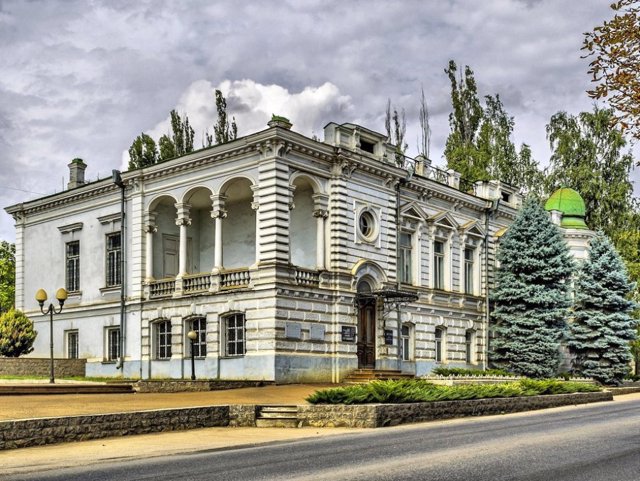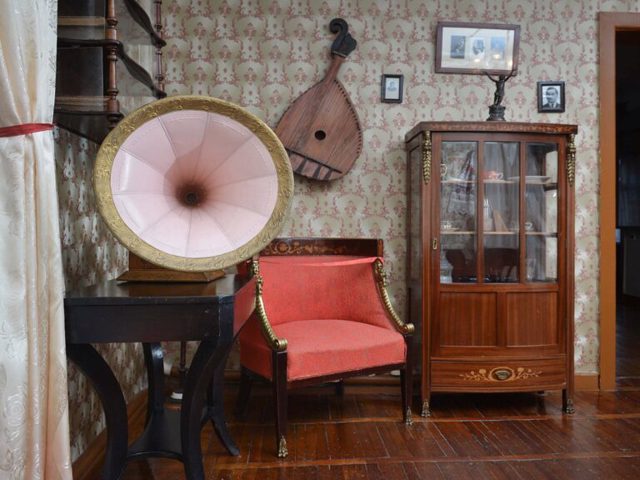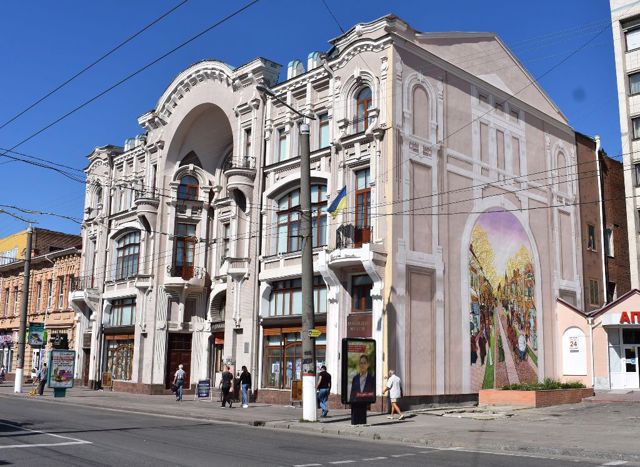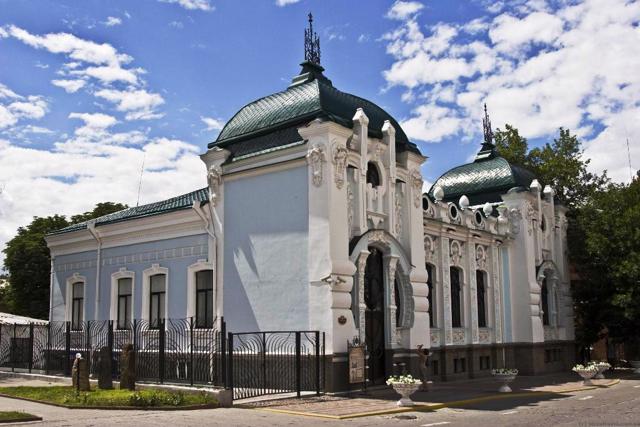Functional temporarily unavailable
Kropyvnytskyi
Travel guide online Kropyvnytskyi
General information about Kropyvnytskyi
Kropyvnytskyi (formerly Kirovograd) is a relatively young city, a large industrial center. Located in the upper reaches of the river. Ingul south of Cherkassy. In the XVI-XVIII centuries. in these places there were Cossack winter huts, in particular the Ingulsky and Lelekovka farms (now urban areas). The current city was founded in 1754 as a fortress of St. Elizabeth by the decision of the Russian Empress Elizabeth Petrovna for protection from the Turks and Crimean Tatars (the ramparts have survived). Having lost its defensive significance, in 1784 Elisavetgrad received the rights of a city. Since the beginning of the XIX century. becomes the center of military settlements in the south of Ukraine. Mid-19th century - the period of active construction, the buildings of the historical cent ...
Kropyvnytskyi (formerly Kirovograd) is a relatively young city, a large industrial center. Located in the upper reaches of the river. Ingul south of Cherkassy. In the XVI-XVIII centuries. in these places there were Cossack winter huts, in particular the Ingulsky and Lelekovka farms (now urban areas). The current city was founded in 1754 as a fortress of St. Elizabeth by the decision of the Russian Empress Elizabeth Petrovna for protection from the Turks and Crimean Tatars (the ramparts have survived). Having lost its defensive significance, in 1784 Elisavetgrad received the rights of a city. Since the beginning of the XIX century. becomes the center of military settlements in the south of Ukraine. Mid-19th century - the period of active construction, the buildings of the historical center have been partially preserved. The industrialists of Elvorti contributed to the development. The poets A. Pushkin and A. Mitskevich have been here. In 1929 the city was renamed Zinovievsk, in 1934 - in Kirovo, in 1939 - in Kirovograd, in 2016 - in Kropyvnytskyi, since in the 19th century. a theater group headed by M. Kropyvnytsky and I. Tobilevich (Karpenko-Karym) worked here, which became the cradle of the Ukrainian theater. The historic center retains a charming provincial spirit.
Кропивницький (колишній Кіровоград) - відносно молоде місто, великий промисловий центр. Розташоване у верхній течії річки Інгул на південь від Черкас. У XVI-XVIII ст. в цих місцях існували козацькі зимівники, зокрема хутори Інгульський та Лелеківка (зараз міські райони). Нинішнє місто засноване в 1754 році як фортеця Св. Єлисавети за рішенням російської імператриці Єлизавети Петрівни для захисту від турків і кримських татар (збереглися вали). Втративши оборонне значення, в 1784 році Єлисаветград отримав права міста. З початку XIX ст. стає центром військових поселень на півдні України. Середина XIX ст. - період активного будівництва, забудова історичного центру частково збереглася. Розвитку посприяли промисловці Ельворті. Тут бували поети О. Пушкін і А. Міцкевич. В 1929 році місто перейм ...
Кропивницький (колишній Кіровоград) - відносно молоде місто, великий промисловий центр. Розташоване у верхній течії річки Інгул на південь від Черкас. У XVI-XVIII ст. в цих місцях існували козацькі зимівники, зокрема хутори Інгульський та Лелеківка (зараз міські райони). Нинішнє місто засноване в 1754 році як фортеця Св. Єлисавети за рішенням російської імператриці Єлизавети Петрівни для захисту від турків і кримських татар (збереглися вали). Втративши оборонне значення, в 1784 році Єлисаветград отримав права міста. З початку XIX ст. стає центром військових поселень на півдні України. Середина XIX ст. - період активного будівництва, забудова історичного центру частково збереглася. Розвитку посприяли промисловці Ельворті. Тут бували поети О. Пушкін і А. Міцкевич. В 1929 році місто перейменовано в Зінов'євськ, в 1934 році - в Кірове, в 1939 році - в Кіровоград, в 2016 році - в Кропивницький, оскільки в XIX ст. тут працював театральний гурток, очолюваний М. Кропивницьким та І. Тобілевичем (Карпенком-Карим), що став колискою українського театру. Історичний центр зберігає чарівний провінційний дух.
Сплануй своє перебування у Kropyvnytskyi
What to see and where to go in Kropyvnytskyi
Tourist attractions and museums of Kropyvnytskyi

Elworthy Museum
Architecture , Museum / gallery
One of the oldest and largest agricultural machinery plants in Europe, specializing in the production of drills. Founded by the English brothers Robert and Thomas Elworthy. The success of the plant, which in pre-revolutionary times worked more than half of the population of Yelisavetgrad, contributed to the development of the city. In Soviet times, it was renamed the "Red Star", whose products were known throughout the world. Currently, the plant has returned the historic name of Elworthy. After the restoration and overhaul of Elworthy's house in 1994, a museum of the plant was opened, which now has more than 3,500 exhibits.

Mark Kropyvnytsky Memorial Museum
Museum / gallery
The Mark Kropyvnytsky Memorial Museum was opened in 1982 in the building where the coryphaeus of the Ukrainian theater lived for almost 20 years. Here Daramturg wrote his classical plays, here in the early 1880's he formed the famous Ukrainian theater troupe. The museum's exposition consists of several sections that tell about the family of the playwright and actor, about his childhood and studies at the gymnasium and university, about his path in art as the founder of the first professional Ukrainian theater - the Theater of Coryphaeus. A monument to Kropyvnytskyi has been erected near the theater of luminaries.

Museum of Art
Museum / gallery
The exposition of the Museum of Arts in Kropyvnytskyi is housed in a Art Nouveau building built at the end of the 19th century by order of merchant I. Shpolyansky. The question of creating an art museum in the city was first raised by the local intelligentsia in 1870, but the real work began only in 1921. The five halls feature exhibits from the Hermitage, the Tretyakov Gallery, Kyiv museums, as well as works by famous artists from Kropyvnytskyi.

Museum of Local Lore (Barsky House)
Architecture , Museum / gallery
The house of the merchant D. Barsky is a bright example of the "early modern" style. According to legend, the owner never had to live in it, because he died after completing all the work just on the doorstep of his new home. Today it houses the regional museum of local lore, founded in 1883 by the teacher of the Zemstvo real school V. Yastrebov. There are 4 stationary expositions that cover the history and nature of Kirovograd region. The basis of the collection is a collection of private collector O. Ilyin: archaeological finds, paintings, icons.
Reviews Kropyvnytskyi
Geographical information about Kropyvnytskyi
| {{itemKey}} | {{itemValue}} |
|---|---|
| Region |
Kirovohrad |


